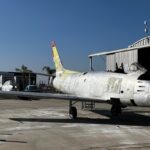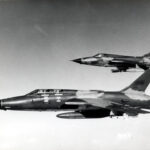Over 87 million jobs in the aviation industry are available worldwide, with good benefits and competitive pay. Despite the difficulties brought on by the Covid-19 epidemic, the industry kept expanding. There are many job prospects in the aviation industry, whether you want to work as a professional airline pilot, flight attendant, or aircraft maintenance worker. However, you’ll need to write a compelling cover letter to make the most of them.
Most Effective Pilot Cover Letter Layout
Let’s chart the safest route to a pilot cover letter that will land you an interview one connection at a time. It will include the following components:
- Header
- Greeting
- Introduction
- Body
- Conclusion
Here are some essential rules for reader-friendliness before guiding how to navigate each of these cover letter parts.
- Keep it brief; a one-page essay of no more than 300 to 350 words is perfect.
- There should be enough white space in the margins and between the lines, and the overall design should be tidy, clean, and streamlined.
- Make careful font selections and use only a few innovative touches.
The Header of a Personal Statement
Your cover letter’s header, which occupies the whole top of the page, should:
- Establish your name and contact information without reluctance so a suitably impressed employer can contact you for an interview.
- Create a unique visual “brand” to set you out from other pilot applicants.
Expert Advice: Align Them
Make a good impression on hiring managers by paying close attention to the heading of your cover letter and resume. Your two job application documents may receive more than a cursory scan if the visual styles are consistent. The purpose of the cover letter heading is to help you stand out from other job hopefuls and make it simple for recruiters to get in touch with you.
Greeting in the Cover Essay
The psychological benefits of hearing or reading our name are supported by science. Your pilot cover letter greeting should, whenever possible, use the reader’s name. The recipient may be your future CEO, the chief pilot, or an HR manager, depending on the size of the organization and the hiring procedure. If you’re unclear and no one is mentioned in the guidelines for the job application, try to find out on the company’s website or give them a call.
The customary salutation, “Dear Mr. or Mrs. Surname,” is always appropriate. Use “Hello,” “Greetings,” or even “Hi” in place of “Dear” if you are sure that a less formal salutation would be appropriate. However, unless you and the recipient are close friends, it is not advised to greet someone by their first name.
If you’re having trouble thinking of the recipient’s name, try using a salutation that fits the occasion, such as “Dear [Company’s Name] Pilot Recruiting Manager” or “Dear [Company’s Name] Pilot Hiring Team.”
The purpose of the cover letter greeting is to start the correspondence off on a formal yet approachable note by establishing a direct personal connection with the recipient.
Introduction to a Personal Statement
Your pilot cover letter launches with an introduction that piques hiring managers’ interest and builds expectations. Naturally, they will anticipate that your most potent arguments for why you would make a great pilot will be introduced in these two or three opening statements. Insights into your drive to provide them with what they need when hired may not be something they anticipate.
Your cover letter will be on its way with the following opening statements if you’ve done the necessary preparation work by extensively researching the airline and the post that needs to be filled:
- The prospect of a new job excites you, and you would be pleased to fly for this airline or another commercial carrier.
- The expertise and success you have to give will be advantageous to this firm.
Communicate with vigor, interest, and courteous confidence. Stop short of giving all the information, just enough to capture the reader’s interest. Introduce yourself in the cover letter focusing on what the hiring manager wants to know about your ability and motivation to contribute.
Body of Covering Letter
The body of your pilot cover letter should soar over a few adequately chosen professional high points at cruising altitude. Explain in pertinent and understandable terms what you know about this airline, what it stands for, and how it will benefit from having you in the pilot’s seat.
Avoid repeating the same details in the same order as in your resume. Reframe your prior successes as potential contributions for the future while providing context with statistics. Include a tale that demonstrates your dedication to lifelong learning and professional advancement.
The purpose of the body of the cover letter is to reassure the reader by drawing pertinent parallels between your experience as a pilot and prospective advantages for the employing firm.
Don’t worry! If it’s not your day and you can not make the piece you expected to, then you can always refer to the expert paper writer for a professional look at your writing. They can also proofread and edit your essay so it looks flawless.
Concluding a cover letter
Your cover letter’s end should leave the reader with a question to properly touch down on the job-landing strip. A call to action is intended to hand control of the next step to the employer. Communicate enough excitement about the interview that the employer will hesitate to ignore and/or disregard your letter. At the absolute least, end your cover letter by expressing your anticipation for a response.
Just that. Next, end your message by adding “Sincerely,” “Best,” or “Regards” above your name. The goal of the cover letter closure is a positive conclusion with a call to action that will hopefully lead to an interview.
Extra Tips for Your Pilot Motivation Essay
- Emphasize Your Knowledge of Customer Service
Customer happiness is key to an airline’s reputation. As they consider your application, hiring managers want to see concrete instances and insights into your customer service experience. Organizations will be significantly more inclined to invite you to interview if you demonstrate a successful background in obtaining high-performance metrics for your past firms. The applicant for the job in the example below demonstrates their superior customer service spanning hundreds of flights, demonstrating their adept interpersonal and verbal communication skills.
- Count Up Your Successes Inside the Aviation Industry
Using the proper measurements and data can help you increase the impact of your professional accomplishments by giving them more context. This is crucial if you want to work as a commercial airline pilot. When considering your application, most recruiting managers will pay close attention to your flying time, cross-country hours, and nighttime hours. In the example below, the job applicant uses bullet points to clearly outline their aviation experience and flight hours in the cover letter.
- Demonstrate Your Leadership Skills
Leadership abilities are crucial for success in the aviation sector, whether managing passengers as a flight attendant or leading teams as a professional pilot. The applicant in the case below is seeking employment as an air traffic control specialist. The candidate successfully demonstrates their capacity to offer safety advice and instructions to pilots under duress. This type of employment demands excellent leadership abilities during crucial safety scenarios. During the application process, it will be incredibly beneficial to highlight your ability to communicate successfully with various passenger populations and flight teams.
























